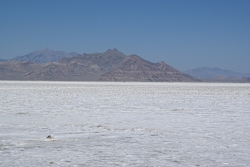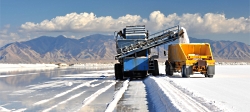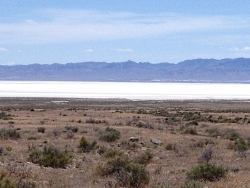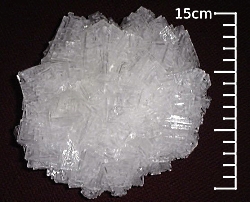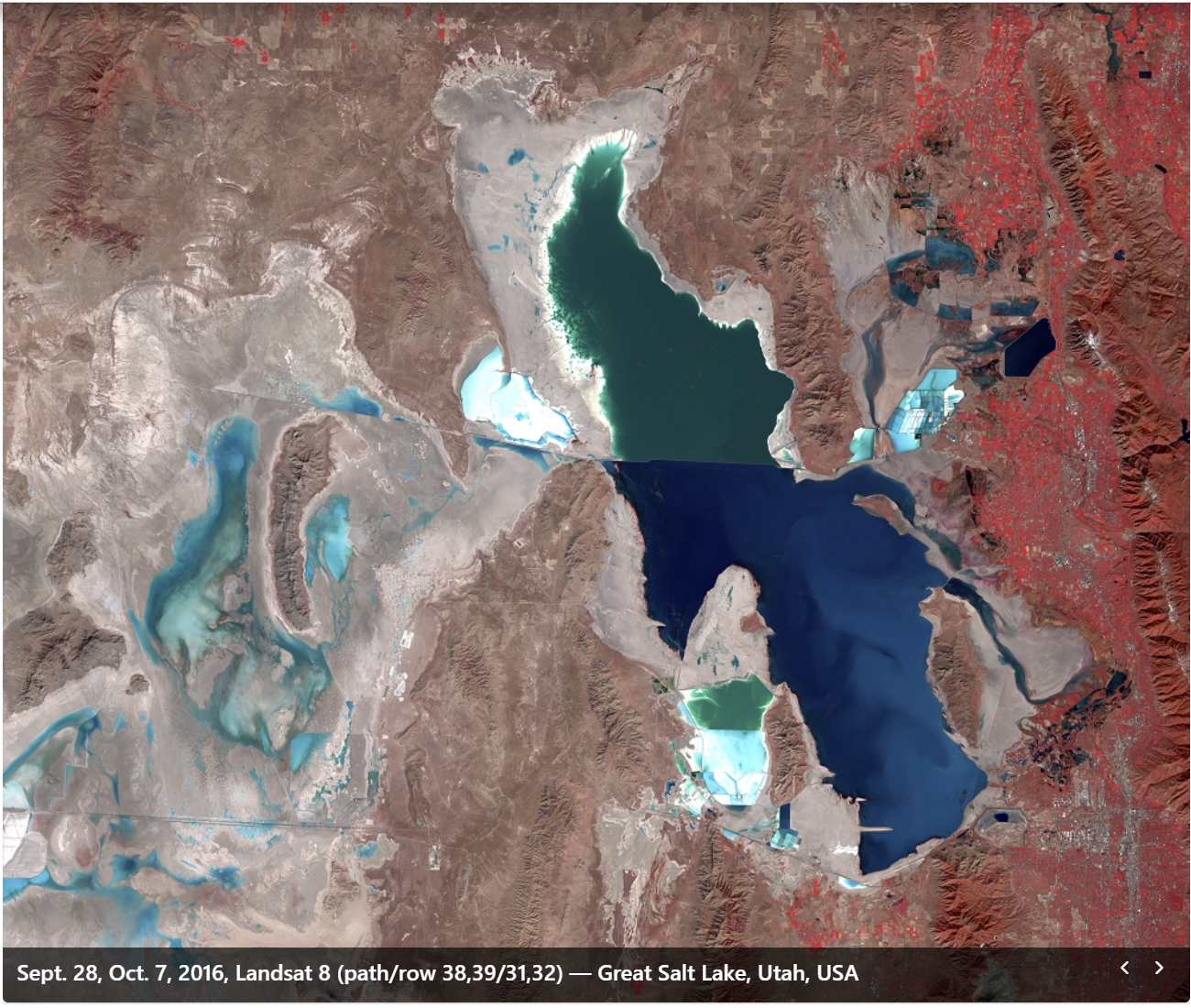
Fall 2016
Courtesy NASA Earth Resources Observation and Science (EROS) Center
 The Great Salt Lake
The Great Salt Lake
Courtesy Pixabay
https://pixabay.com/photos/utah-great-salt-lake-water-95570/
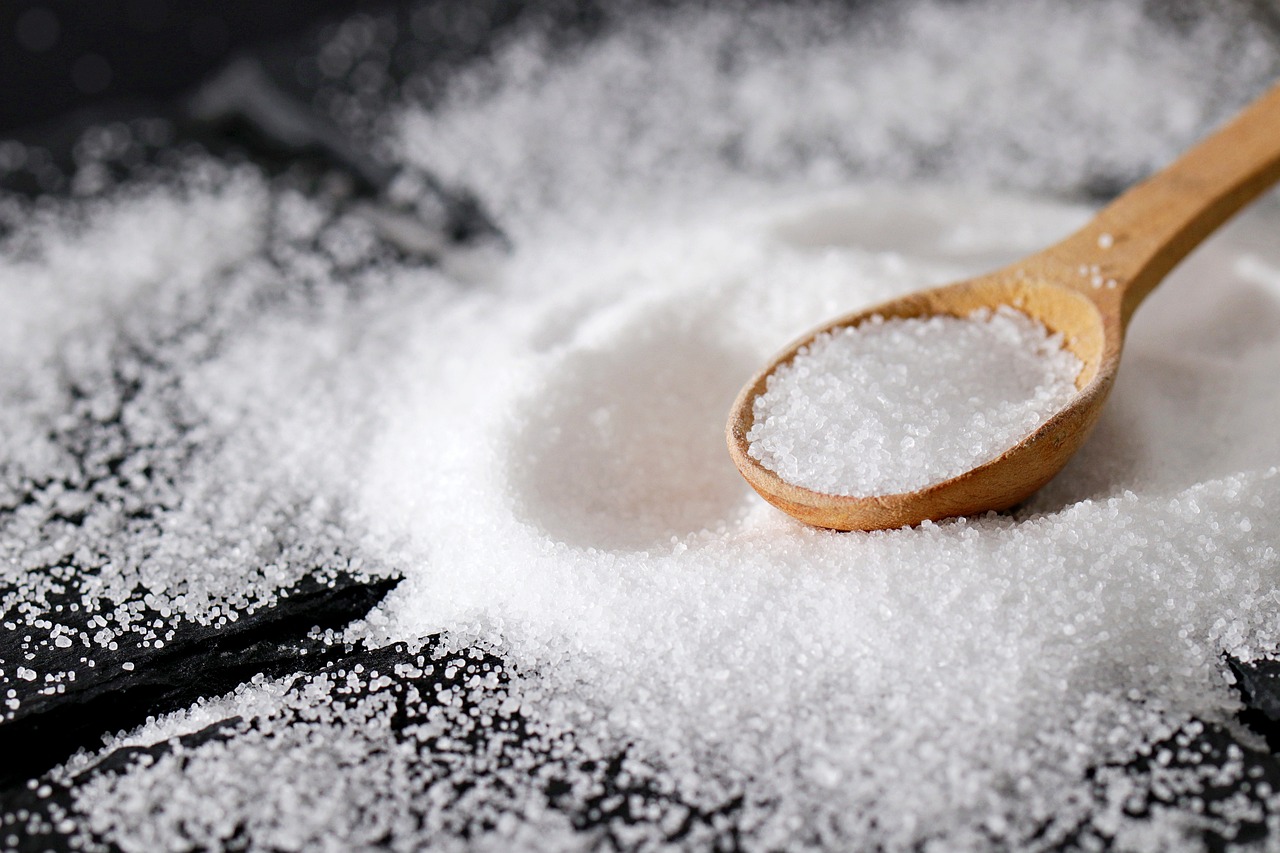 Salt with a Wooden Spoon, Courtesy Pixabay
Salt with a Wooden Spoon, Courtesy Pixabay
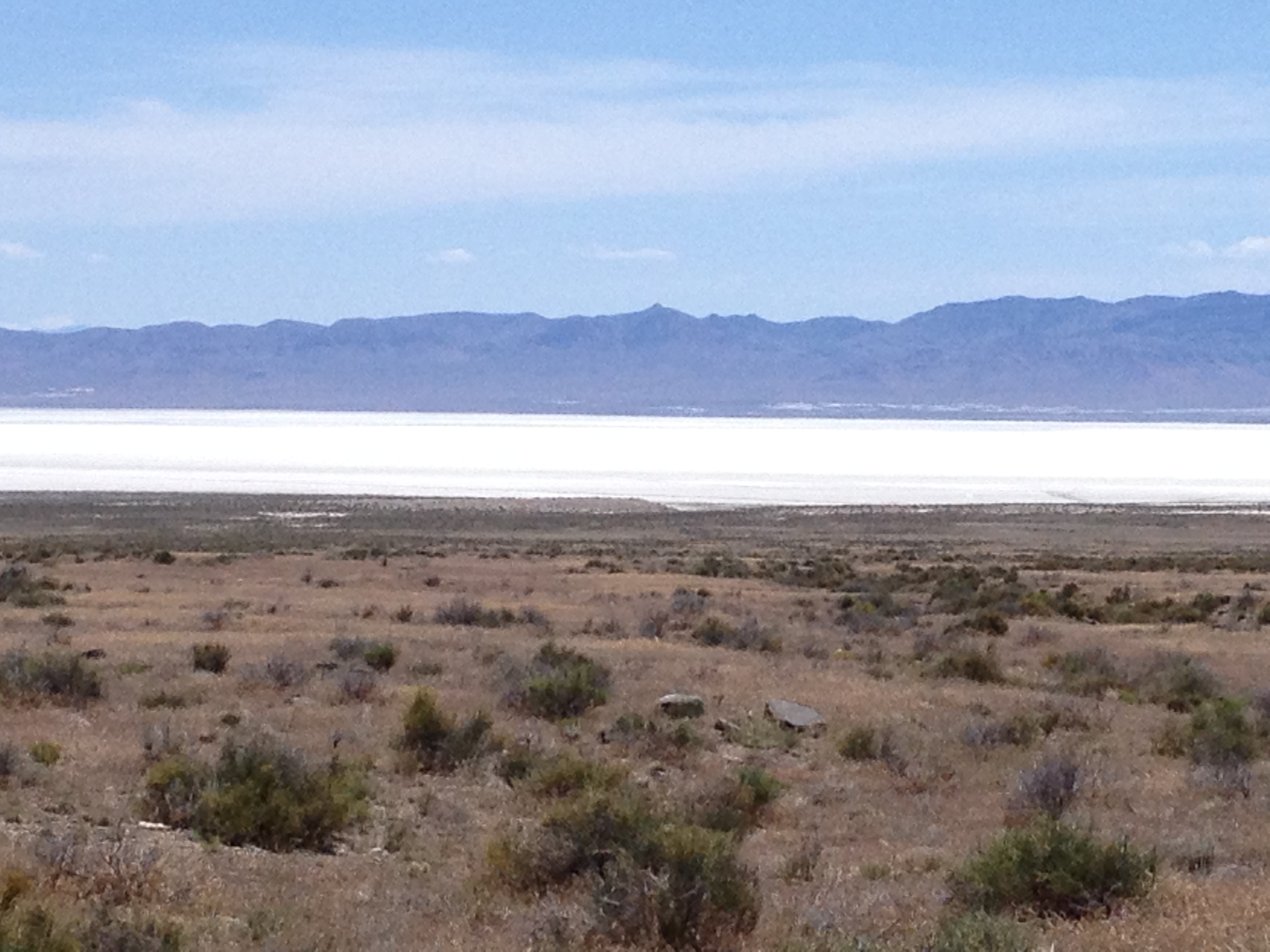 Sevier Lake
Sevier Lake
Courtesy & Copyright 2013
Holly Strand, Photographer
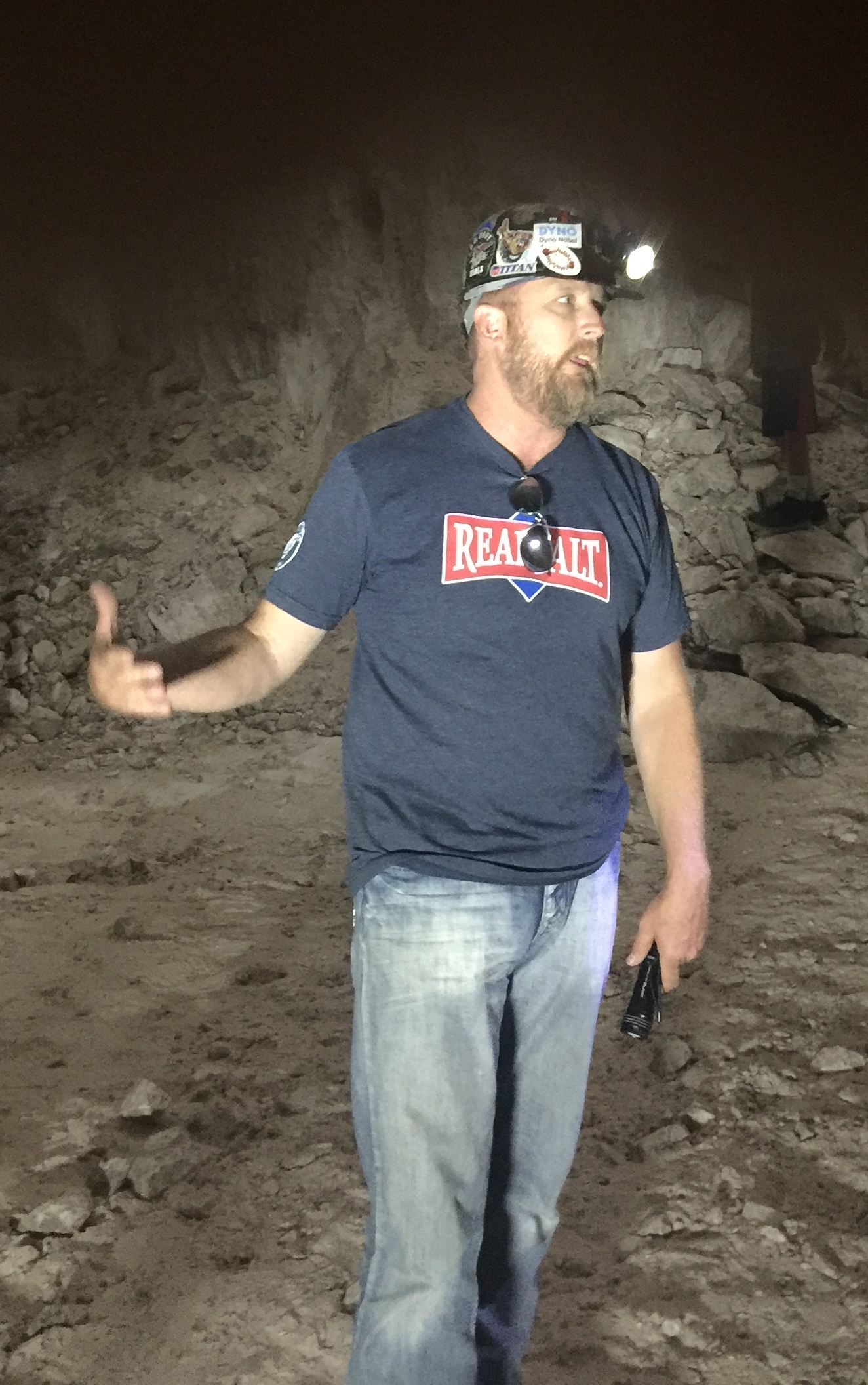 Kyle Bosshardt Explains the Origins of the Redmond Minerals Mine
Kyle Bosshardt Explains the Origins of the Redmond Minerals Mine
June 2018
Courtesy & © Lyle Bingham
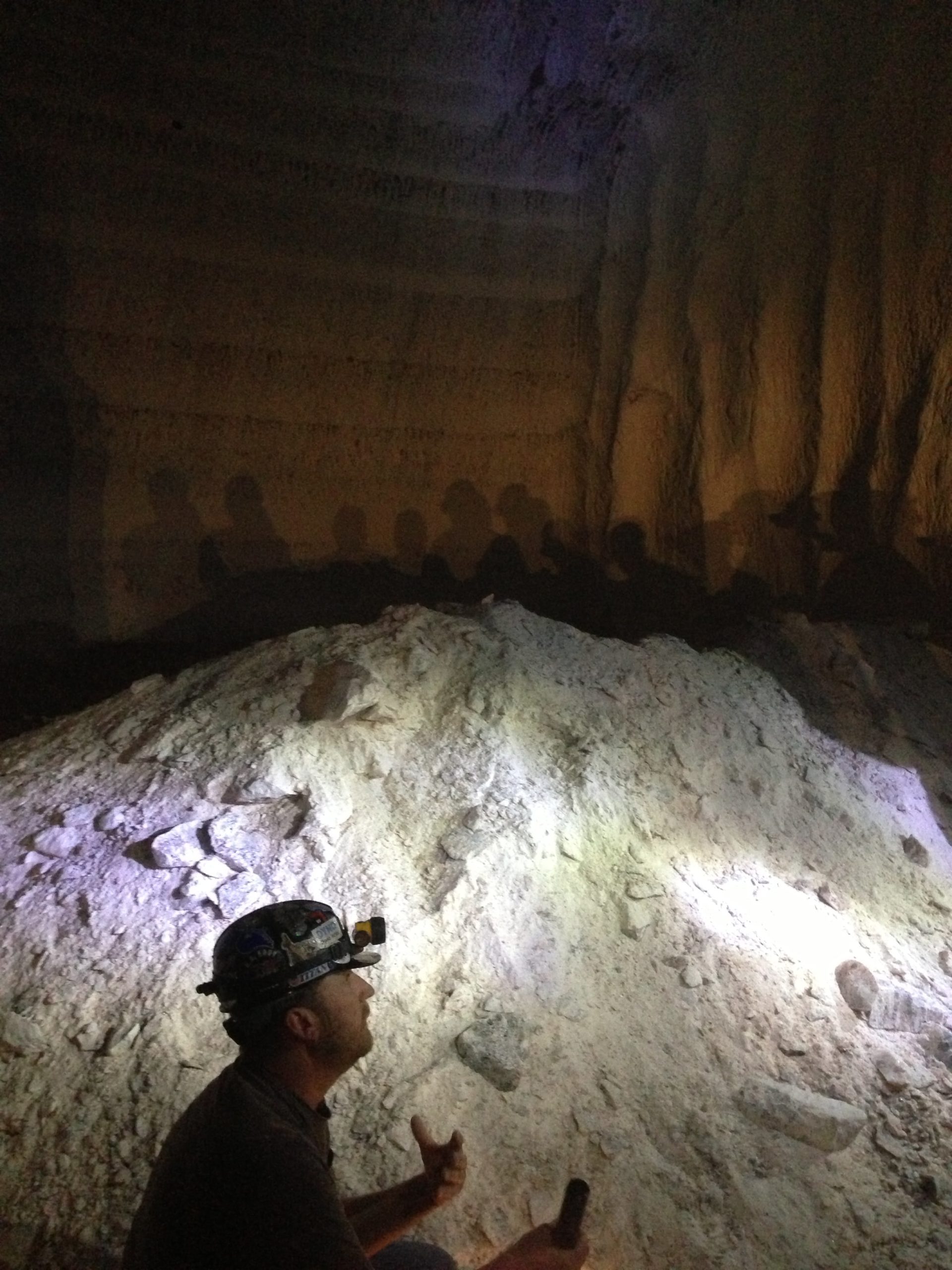 Kyle Bosshardt Explains Redmond Salt Mineral Composition to a Tour
Kyle Bosshardt Explains Redmond Salt Mineral Composition to a Tour
June 2013
Courtesy & © Lyle BinghamHere in Utah, early explorers and native peoples knew of saline deposits, springs and lakes long before the pioneers arrived in 1847. For example, more than 1300 years ago,
the Fremont traded salt, found near Redmond, Utah, to the cliff-dwelling Anasazi of Mesa Verde. Necessary for life, salt is found across the State of Utah, where it is harvested, mined, processed and traded worldwide for various applications.
In a geologic recycling story that crosses many epochs, different salt compounds are often mixed and then move in water or under pressure. Normal table salt, the mineral halite, is chemically described as sodium chloride. Often found together in different concentrations are the bitter salts of potassium and magnesium. All these salts leach from rocks and soil, then wash downstream to oceans and land-locked lakes, such as Sevier Lake and the Great Salt Lake. In many cases, an ancient inland sea or lake deposited a layer of salt followed by layers of clay, sediment or lava. Then geologic forces uplifted the layers to repeat the cycle and make the salt accessible.
Lehi Hintze, in Utah’s Spectacular Geology, wrote, “Rock salt has two characteristics that promote upward movement. First, it is soft and flows plastically like ice does in a glacier. Second, it is less dense than other rocks and tends to migrate upward through the denser surrounding rocks….”
When the pioneers moved to Utah, salt rendering became one of the first industries established for external trade. They boiled Great Salt Lake water over wood fires until only salt remained. However, this lake salt tasted bitter due to impurities in the water. Fortunately, it could be sold to mines in Montana where salt was used to refine silver. Today, salt from the Great Salt Lake continues to be harvested mostly for industrial purposes including metal extraction, water softening and road de-icing.
For early salt entrepreneurs, boiling proved expensive. In time, the sun was put to work and evaporation ponds were built on the shores of the lake. At first the ponds filled when the wind blew, sometimes resulting in wall collapses. These failures led to better walls and brine pumps to repeatedly fill the ponds. Anyone flying west from Salt Lake City has seen these multicolored drying beds. Harvested mountains of dried salt, seen at the Morton and Cargill sites when driving I-80 towards Nevada, are loaded on trucks and rail cars for nationwide distribution.
More recently developed, is the salt mine west of Redmond, Utah, near Salina. The Redmond salt deposit predates the Great Salt Lake, which came from the drying of Lake Bonneville. Redmond Minerals is mining the first 800 feet of a 5000-foot diapir, an extruded mound forced up from salt beds deposited by the Jurassic Sundance Sea. In digging more than 18 miles of tunnels, Redmond has identified several grades of salt. Their culinary salt is sold worldwide as Real Salt, but the majority of their production is for agriculture, animal health and de-icing.
Salt production in Utah is possible because of the geologic and historic past. Just as the Fremont gathered and traded salt anciently, modern methods of harvesting and mining allow companies to distribute products worldwide. As such, salt continues to contribute to Utah’s role as the Crossroads of the West.
This is Lyle Bingham and I’m Wild About Utah and its 15 years on Utah Public Radio.
Credits:
Photos: Great Salt Lake Photos Courtesy NASA Earth Resources Observation and Science (EROS) Center
Great Salt Lake and Salt with a Wooden Spoon, Photos Courtesy Pixabay
Redmond Photos Courtesy & Copyright Lyle Bingham, Photographer
Featured Audio: Courtesy & © Kevin Colver, https://wildstore.wildsanctuary.com/collections/special-collections
Text: Lyle Bingham, https://bridgerlandaudubon.org/
Additional Reading: Lyle Bingham, https://bridgerlandaudubon.org/
Additional Reading
Lyle Bingham’s Wild About Utah Postings
Strand, Holly, Utah is Worth its Salt, Wild About Utah, November 21, 2013, https://wildaboututah.org/utah-is-worth-its-salt/
The Great Salt Lake, Hassibe, W.R. & Keck, W.G., USGS, US Department of the Interior, https://pubs.usgs.gov/gip/70039229/report.pdf
Cabrero, Alex, Redmond salt mine supplies Utah’s roads and chef’s kitchens, KSL TV, December 18, 2022, https://www.ksl.com/article/50540322/redmond-salt-mine-supplies-utahs-roads-and-chefs-kitchens
The Mineral Industry of Utah, National Minerals Information Center, USGS, US Department of the Interior, https://www.usgs.gov/centers/national-minerals-information-center/mineral-industry-utah
Salt Providers in Utah:
Other Salt-related mineral extractors in Utah:
Above lists may not be complete. Please send recommendations to wildaboututah@gmail.com
The Great Salt Lake, Utah Division of Water Resources, Utah Department of Natural Resources, https://water.utah.gov/great-salt-lake/
Great Salt Lake Plans, Utah Division of Forestry, Fire & State Lands, Utah Department of Natural Resources, https://ffsl.utah.gov/state-lands/great-salt-lake/great-salt-lake-plans/
Clark, John L., History of Utah’s Salt Industry 1847-1970, August 1971, Thesis, BYU Dept of History, https://scholarsarchive.byu.edu/cgi/viewcontent.cgi?article=5602&context=etd
Coloring the Great Salt Lake, The Earth Observatory, EOS Project Science Office, NASA Goddard Space Flight Center, https://earthobservatory.nasa.gov/images/147355/coloring-the-great-salt-lake
Hintze, Lehi F, Utah’s Spectacular Geology and How It Came to Be, Department of Geology, Brigham Young University, 2005, https://archive.org/details/utahsspectacular0000hint/mode/2up
Follow-up:
Winslow, Ben, Compass Minerals to abandon lithium extraction on Great Salt Lake, Great Salt Lake Collaborative, Fox13, Scripps Media, Inc, https://www.fox13now.com/news/great-salt-lake-collaborative/compass-minerals-to-abandon-lithium-extraction-on-great-salt-lake

